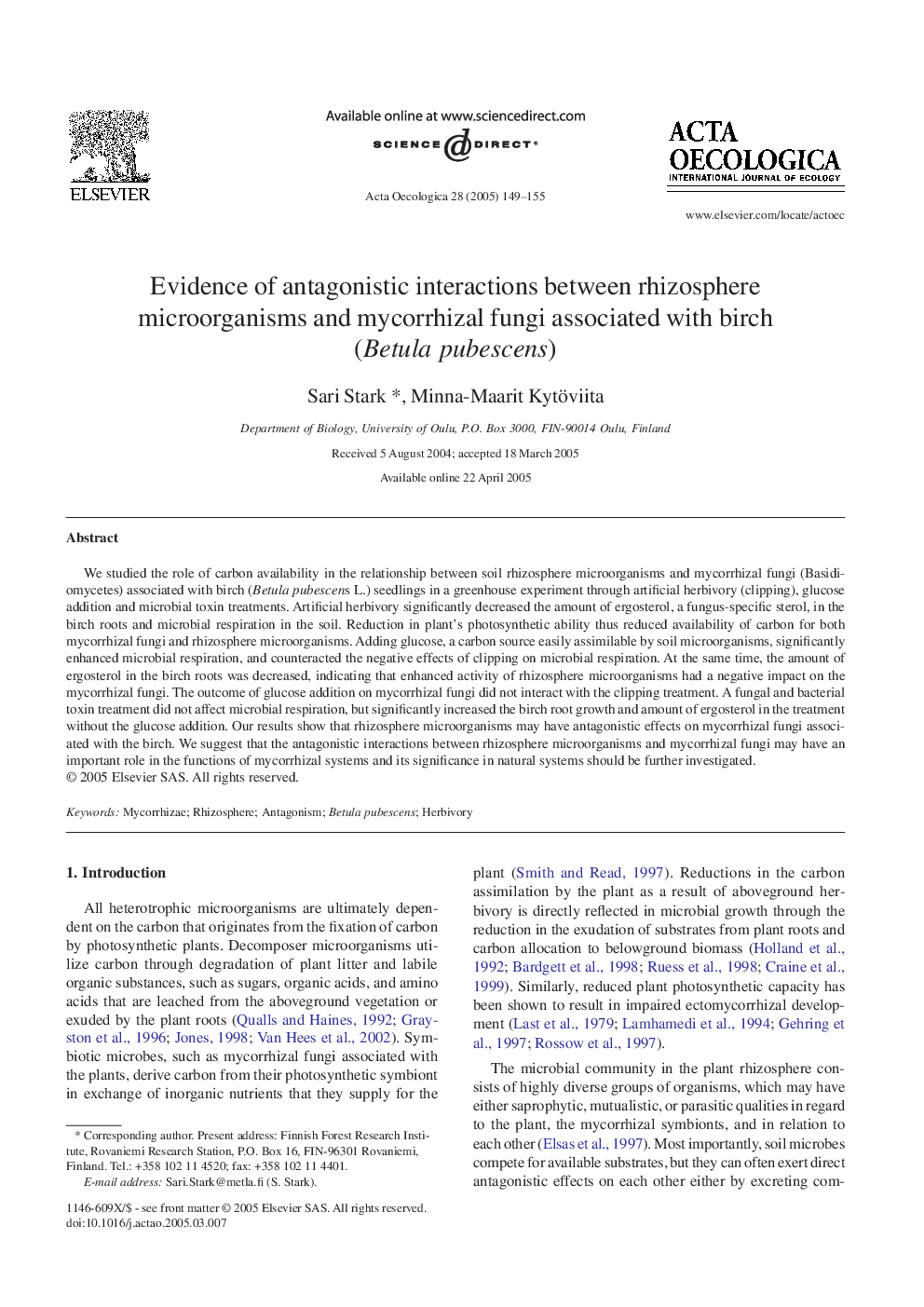| Article ID | Journal | Published Year | Pages | File Type |
|---|---|---|---|---|
| 9445002 | Acta Oecologica | 2005 | 7 Pages |
Abstract
We studied the role of carbon availability in the relationship between soil rhizosphere microorganisms and mycorrhizal fungi (Basidiomycetes) associated with birch (Betula pubescens L.) seedlings in a greenhouse experiment through artificial herbivory (clipping), glucose addition and microbial toxin treatments. Artificial herbivory significantly decreased the amount of ergosterol, a fungus-specific sterol, in the birch roots and microbial respiration in the soil. Reduction in plant's photosynthetic ability thus reduced availability of carbon for both mycorrhizal fungi and rhizosphere microorganisms. Adding glucose, a carbon source easily assimilable by soil microorganisms, significantly enhanced microbial respiration, and counteracted the negative effects of clipping on microbial respiration. At the same time, the amount of ergosterol in the birch roots was decreased, indicating that enhanced activity of rhizosphere microorganisms had a negative impact on the mycorrhizal fungi. The outcome of glucose addition on mycorrhizal fungi did not interact with the clipping treatment. A fungal and bacterial toxin treatment did not affect microbial respiration, but significantly increased the birch root growth and amount of ergosterol in the treatment without the glucose addition. Our results show that rhizosphere microorganisms may have antagonistic effects on mycorrhizal fungi associated with the birch. We suggest that the antagonistic interactions between rhizosphere microorganisms and mycorrhizal fungi may have an important role in the functions of mycorrhizal systems and its significance in natural systems should be further investigated.
Related Topics
Life Sciences
Agricultural and Biological Sciences
Ecology, Evolution, Behavior and Systematics
Authors
Sari Stark, Minna-Maarit Kytöviita,
